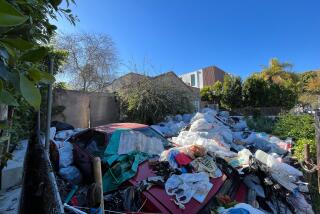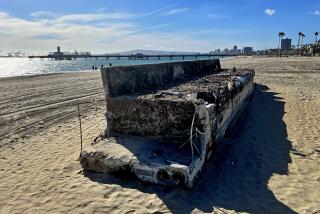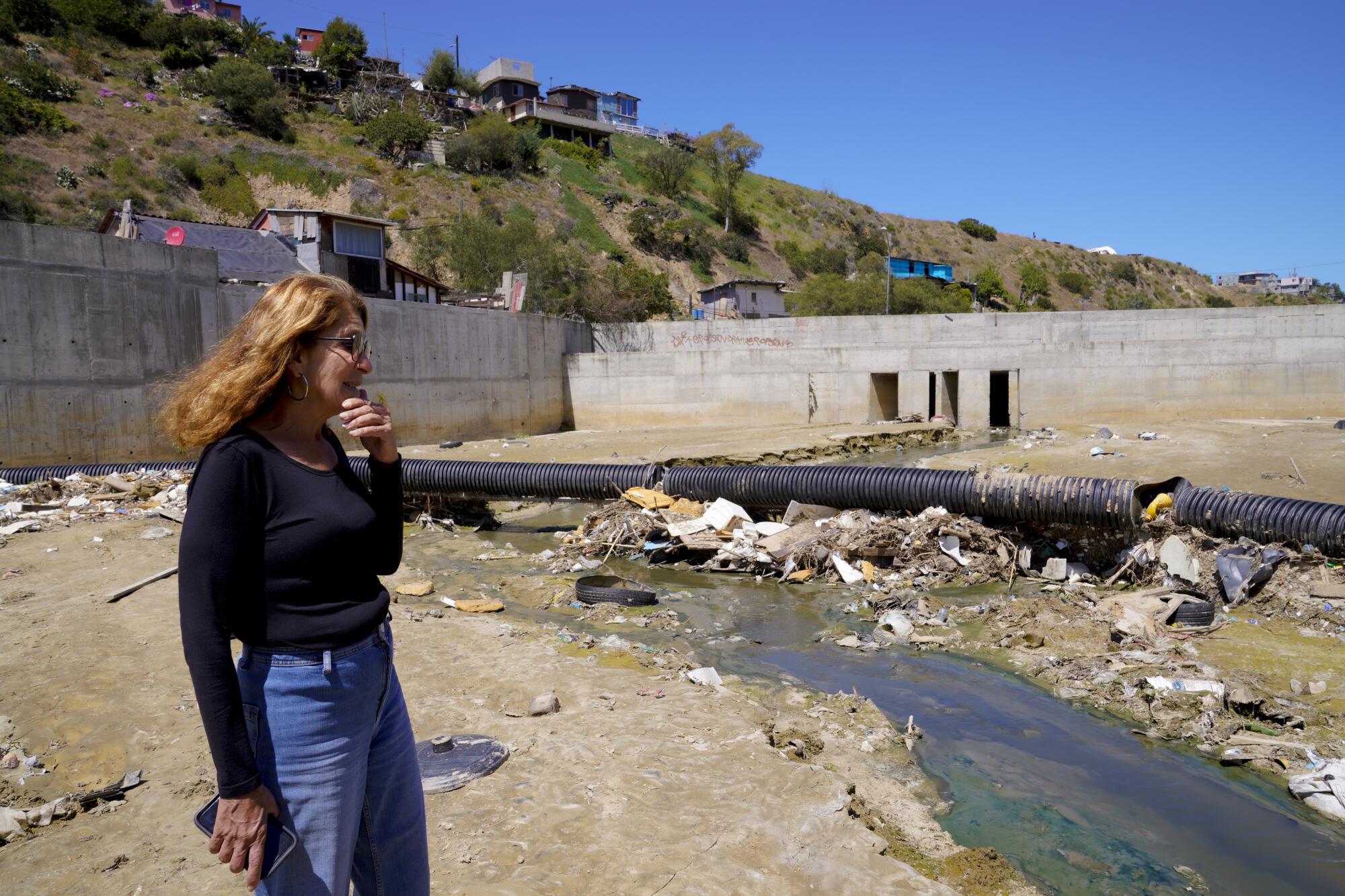
Rain flushes thousands of pounds of trash a year through Tijuana’s Los Laureles Canyon and into San Diego County. Plastic bottles and car tires clog the estuary in Imperial Beach and pollute the city’s shoreline, where the refuse can harm an array of creatures including birds, lobsters, dolphins and gray whales.
In response, the local nonprofit Wildcoast has constructed a nearly 160-foot-long floating net, known as a trash boom, in a concrete flood-control channel that winds its way through one of Tijuana’s most impoverished neighborhoods. The device unfurls from a black plastic tube that rises with the water level.
The group reported this week that it has trapped roughly 73,000 pounds of trash in the boom so far, much of which has been sold to a recycling company.
On Wednesday, workers contracted by the nonprofit hauled old shoes, T-shirts, deflated soccer balls and countless plastic water and soda bottles out of the roughly 25-foot-deep channel.

Advocates with the Imperial Beach-based nonprofit Wildcoast say they have prevented about 73,000 pounds of trash from flushing into the Pacific Ocean
“When we first work here, a lot of people said, ‘Two months and you go. We never see you again,’” said Juan Benitez, a local resident who has helped Wildcoast with the project for more than a year.
“Now after six months, eight months, people know we’re working here. The people start to help,” explained Benitez, 58, who wore a reflective orange and yellow construction vest while overseeing a team of people sorting plastic bottles into large nylon sacks under a Wildcoast-branded shade structure.
More than 65,000 people are estimated to live in Los Laureles Canyon, an unpermitted neighborhood of pink, orange and teal homes, many of which are built out of garage doors and cinder blocks. At the bottom of the ravine, the concrete flood-control channel is flanked by two busy roads lined with cafes, small grocery stores and a school.
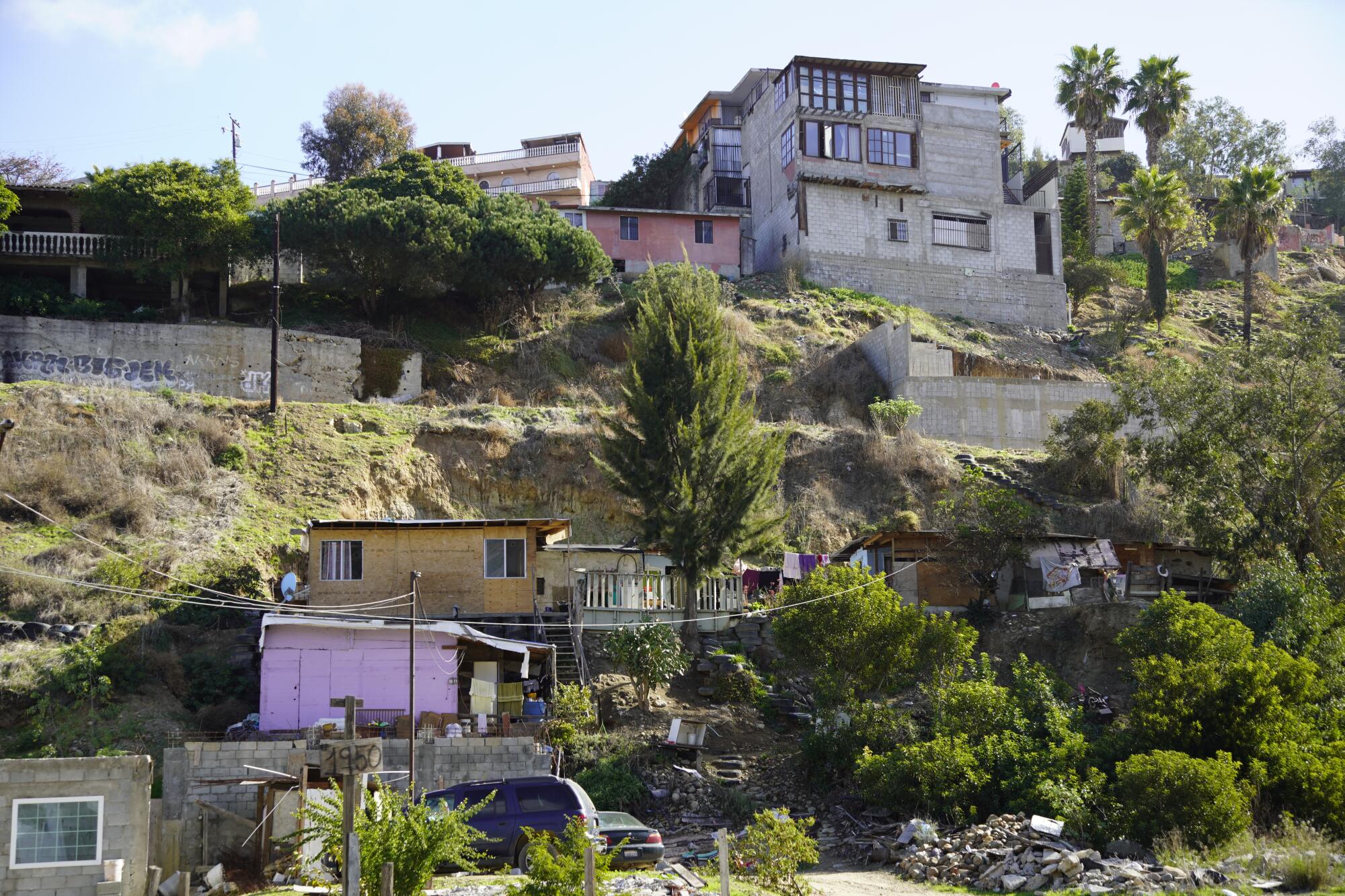
Thousands of poor migrants have flocked to the area over the last two decades searching for jobs, often drawn to the region for its many maquiladoras, factories run by companies such as Coca-Cola, Toyota, Sony and Samsung.
On Wednesday, smiling children played soccer and chased scraggly dogs through trash-strewn streets while roosters crowed over Mexican pop music. Along the main drag, a federal police officer armed with a machine gun searched a man splayed over a car as vehicles rumbled by over the cracked pavement.
Most homes in the area have little to no garbage collection services. None are hooked up to city plumbing, instead emptying sewage and other wastewater through long plastic pipes directly into the canal.
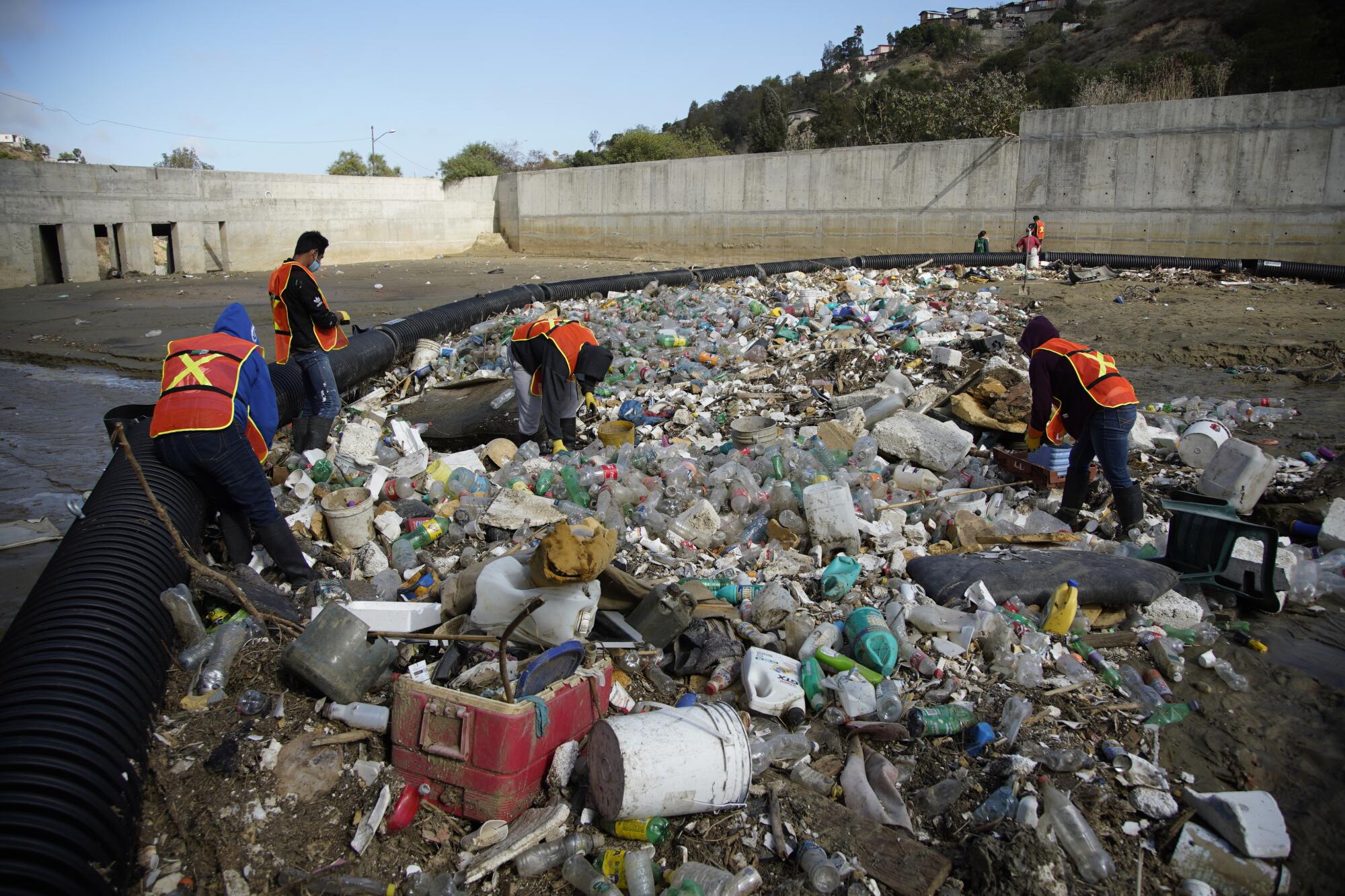
Municipal trucks, which make weekly rounds in Los Laureles Canyon, only collect about 2% of all the refuse produced in the area, said Fay Crevoshay, communications and policy director for Wildcoast.
“What would you do if nobody picked up your trash?” asked Crevoshay, 64, a Mexico City native who helped spearhead the cleanup effort. “So people put it in little plastic bags. They put it in the corner when they walk to work, in this corner, that corner. It’s a mess.”
Crevoshay knows that the trash boom in the flood-control channel isn’t catching all the waste in the community. But she says the effort is having a major impact, especially on cross-border pollution. It has also inspired residents to start bringing their recycling to the nonprofit’s collection center.

Wildcoast has also used tires and other materials retrieved from the boom to build a nearby playground with swings, tetherball courts and a small soccer field.
Pilar Marquez, who lives with her husband and six children in their home above the channel, said the project has made a huge difference for the community.
Before the net was installed, the canal would get plugged up with trash, the 38-year-old explained through a translator: “There were accidents. Kids would be floating through the water.”
Marquez said she’s happy she moved to the canyon at 18 from a small farming village to the south. She said she likes the “tranquil” atmosphere, although in recent years crime has increased.
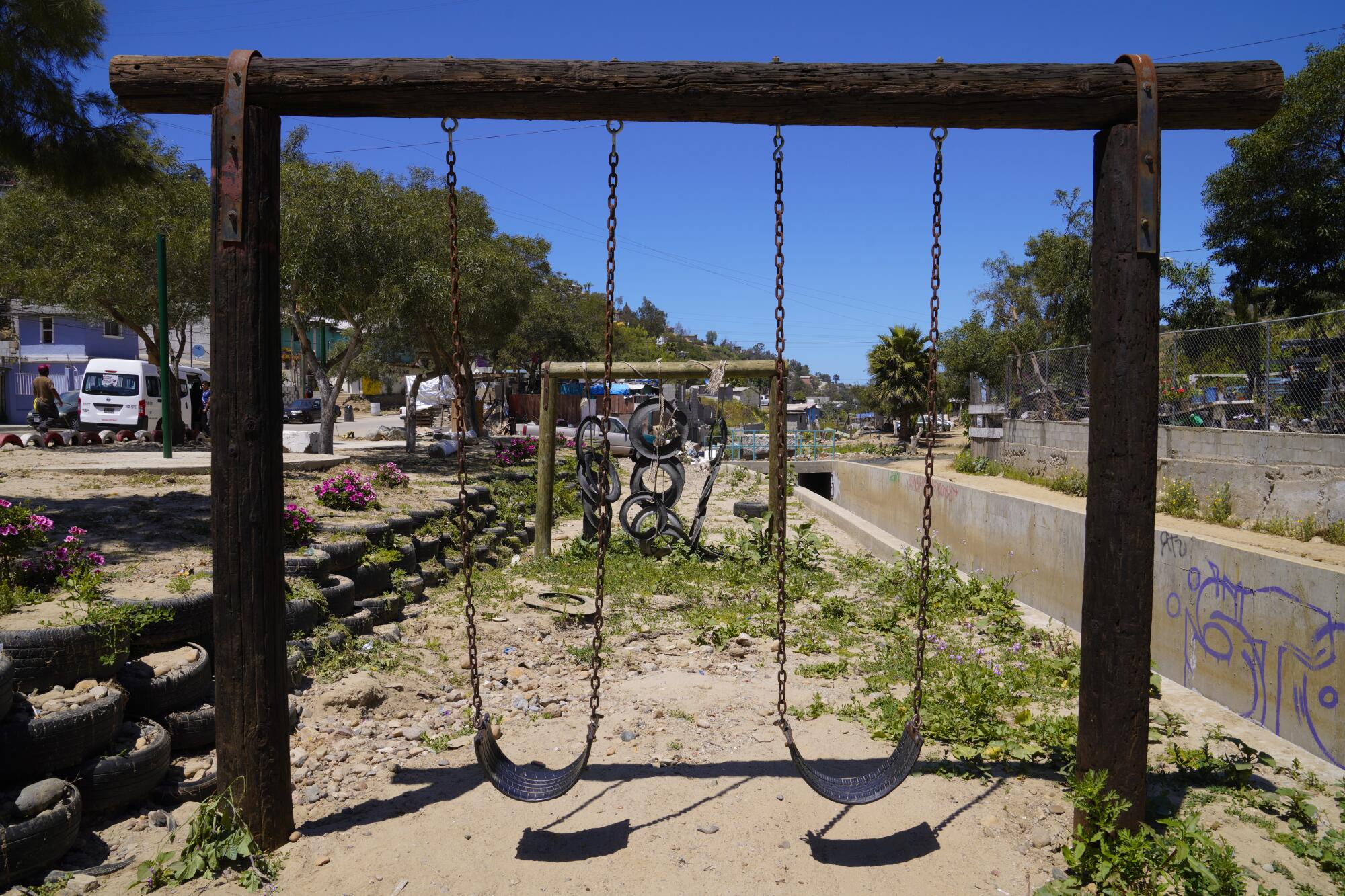
She said she frequently has to yell at drug addicts who try to steal metal parts off the boom.
“We have to look out and make sure people don’t vandalize it,” she said. “I don’t want the trash to go into the ocean.”
Funding for the project, which cost about $60,000 to install, came from the Benioff Ocean Initiative and the Coca-Cola Foundation. The National Oceanic and Atmospheric Administration also provided aid for ongoing operations and maintenance.
Wildcoast hopes to install two more trash booms in the nearby communities of Camino Verde and Matadero Canyon by 2024.

More to Read
Start your day right
Sign up for Essential California for news, features and recommendations from the L.A. Times and beyond in your inbox six days a week.
You may occasionally receive promotional content from the Los Angeles Times.
